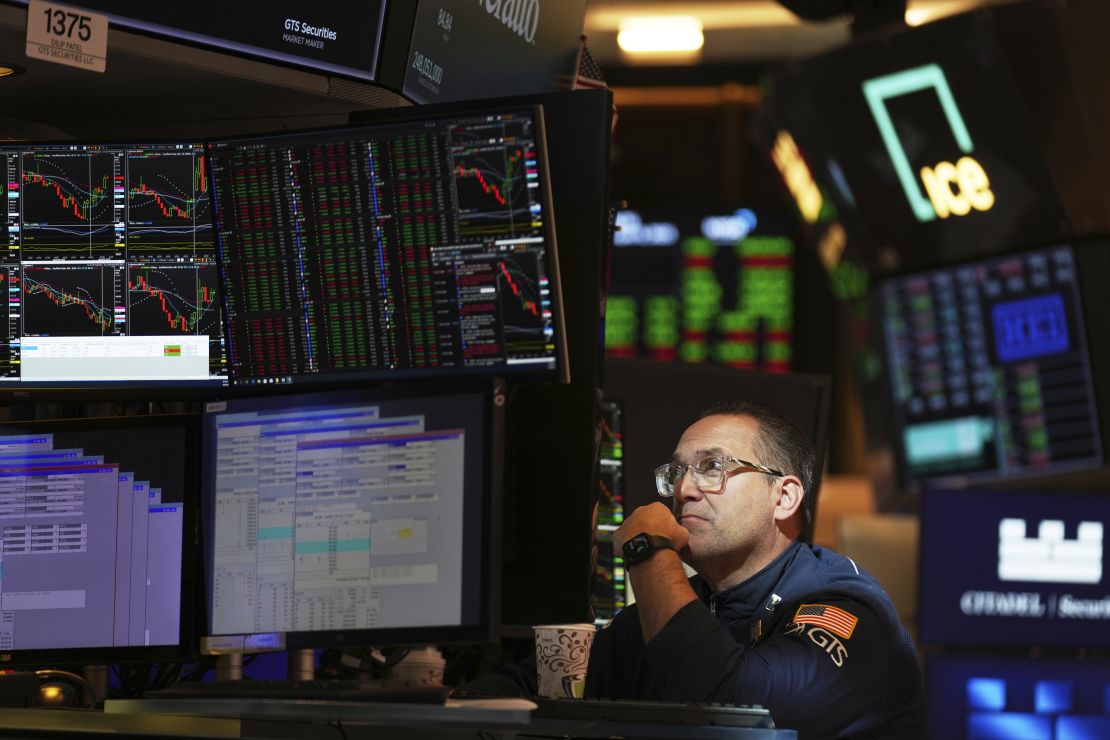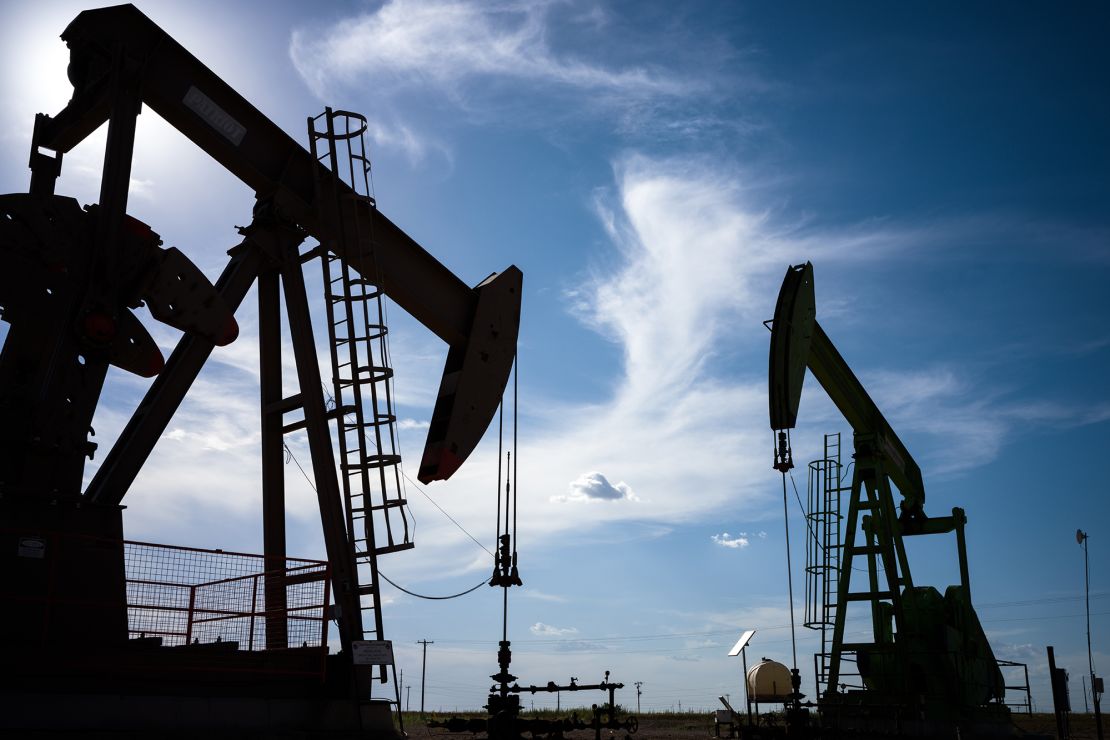new York
Cnn
–
American actions sore skyrocketed on Wednesday after President Donald Trump published on social networks that he had authorized a 90 -day break on the “reciprocal” prices that entered into force at midnight, with the exception of China.
Wall Street had been on board, looking for any sign that Trump could move his approach to his punitive rates. Thus, when Trump displayed that he had paused on most of the reciprocal prices, investors were ready to dive.
American actions immediately increased. The DOW skyrocketed 2,963 points, or 7.87%. The S&P 500 increased by 9.52%. The Nasdaq, heavy in technology, climbed by 12.16%.
In a massive turnaround, the S&P 500 has published its best day since October 2008. The Nasdaq has published its best day since January 2001 and its second best day in its history. The Dow has displayed its best day in five years.
The S&P 500 is now up 12.86% compared to its Nadir, two days ago, but is still down more than 3.7% compared to its fence on April 2, just before Trump initially put its reciprocal prices in force. The Nasdaq is still 2.7% below its fence on April 2.
“The market movement is violent and explains how the market is looking for a clarity on this issue,” said Chris Brigati, director of investments at SWBC, an investment company in San Antonio, Texas.
The positive change was widespread. Almost all companies in the S&P 500 have increased, according to FostSet data.
After Trump’s announcement, investors picked up stocks and markets have soaked. However, uncertainty remains while Trump has always degenerated the trade war with China, passing its rate rates to 125%, against 104%. In addition, universal rights of 10% remain on all American imports alongside targeted sectoral prices on cars.
The S&P 500 had been on the precipice of the bear market territory, approaching an incredibly rapid drop of 20% compared to the top of all time, it struck seven weeks ago on February 19.
Wall Street was sigh of relief while the markets have skyrocketed, but investors are not necessarily clear.
“Trump illustrated everyone on the market today how incredibly difficult to trade around his pricing regime, because he and himself knows when he ends,” said Jamie Cox, director partner at Harris Financial Group.
Right after the opening that Bell Trump published on his social media platform Truth Social: “Be cool!” And “It’s the perfect time to buy !!!”
American actions initially had a mixed day After China announced significant reprisals and the European Union announced countermeasures against the enormous “reciprocal” prices of President Donald Trump who had entered into force earlier in the day.
The new prices of China on American products are 84%, corresponding to the additional price that the Trump administration had just placed on the second world economy. China, an extreme aberrant value, is now faced with an American rate of at least 104%, aggravating the new prices with those already in place.
Fear has seized investors around the world while prices threaten to plunge global and American economies into a recession this year. Companies and consumers will end up getting their supplies with these massive price invoices, and uncertainty has led to a slowdown in hiring and consumer expenses.

The Japan Nikkei index decreased by 4%, while Hang Seng of Hong Kong finished slightly more. On Monday, Hang Seng landed in a rout of 13% – the greatest daily drop in the index since the Asian financial crisis in 1997.
On Wednesday, the South Korea’s reference index went to the bear market territory, a decrease of 20% compared to a recent peak, after the country announced $ 1.3 billion in emergency support measures for its automotive industry while seeking to mitigate the Trump administration’s prices. The index closed 1.7%, down approximately 20% compared to a peak reached in July 2024.
Taiwan markets have also dropped sharply. But the Shanghai stock market closed more than 1% more, an aberrant value in a sea of red on Wednesday.
In Europe, the region’s Stoxx 600 reference index fell 3.5%. The French CAC index fell 3.34% and Germany Dax was 3% lower. The London FTSE 100 index was less than 2.92%.
Meanwhile, the US oil course reversed the course after tweaking earlier during the day. US oil gained 4.65% at $ 62.35 per barrel. Earlier in the day, he dropped a barrel at $ 57. The Brent Brut World reference reversed the course after being briefly fell below $ 60 a barrel and gained 4.23% at $ 65.48 per barrel. The two had reached their lowest level since 2021 earlier during the day. Oil prices had plunged while investors feared that a potential global recession could at the request of travel, transport and shipping – which all require fuel.
Investors have paid money into traditional safety havens, such as gold. The golden points prices increased by 3.8%.
But, curiously, the yields of the US Treasury have increased in recent days, as investors have sold obligations. The reference yield at 10 years, which fell below 4% earlier in the week, is now around 4.3%. The obligations were volatile on Wednesday, the yields went down slightly after doping but above recent sessions. The obligations make and that prices are negotiated in opposite directions.
As a rule, in times of crisis, investors pay money in longer -term obligations in the hope that short -term market problems are resolved in the long term. But the bond market, like the stock market, has been shaken by extreme volatility in recent days, and some investors are heading for outings.

On Wednesday, Deutsche Bank analysts said that the mass exodus of the Treasury obligations could report a weakening of the demand for assets supported by the United States-traditionally considered as the safety stallion because it has the support of the American government.
But in a trade war, investors may fear that America can lose its special position in the world – an opinion echoing by the CEO of JPMorgan, Jamie Dimon, in his shareholder letter earlier this week. And foreign governments that are negotiating with Trump on trade can threaten to sell their massive treasures, harming America’s ability to borrow money to pay for its significant budget deficit.
“A political objective of reducing bilateral commercial imbalances is to lower demand for American assets,” Deutsche Bank analysts said in a note to investors.
The US dollar index, which measures the strength of the dollar against six foreign currencies, made its earnings after tumbling on Wednesday. The dollar has largely weakened this year – a potential warning sign concerning the confidence of entertaining investors in the United States.
The CBOE volatility index, also known as Wall Street’s “Vix” and “fear Gauge”, briefly exceeded 50 – a level that the index has closed only twice before this week: during the early stages of the Pandemic cochem in March and April 2020 and the financial crisis of 2008-2009 which caused the neat recession.
The VIX flowed 30% after Trump’s announcement of a break on most reciprocal prices.
The VIX is perhaps the best known measure of the feeling of the market. It measures expected prices or volatility in the S&P 500 index options over the next 30 days. VIX often increases on days when the wider market flows – and gathers when stocks increase. But over time, the VIX tends to be lower on the bull markets and more when the bears are in control.
The lowering feeling is omnipresent on the market lately. The index of fear and greed of CNN has firmly pointed out the “extreme fear” in recent days – approaching the lowest point of its scale.
Volatility works in both directions, and Monday and Tuesday are good examples. The market jumped and sang and rebounded in all the directions of the day as a news – and even false news on Monday – in terms of Trump’s potential levels for prices have made its way through Wall Street.
“The United States and China are now locked in a trade war without being likely to retreat at the moment,” Susannah Streeter, head of money and markets at Hargreaves Lansdown, told CNN. “What you see in investors being extremely reckless, which is why (there are) large fluctuations.”
At a press conference in the afternoon on Tuesday, the White House press secretary Karoline Leavitt said that China had missed its deadline to take off a 34% reprisal rate imposed on American goods on Friday. Thus, the Trump administration almost doubled its additional price in China on Wednesday morning.
This means that all Chinese products arriving in the United States will receive a minimum rate of 104%.
This is a story in development and will be updated


